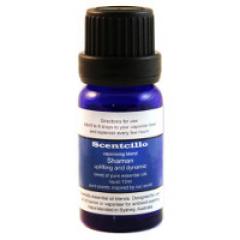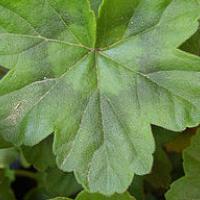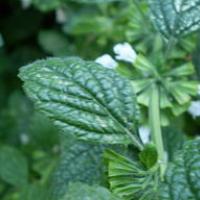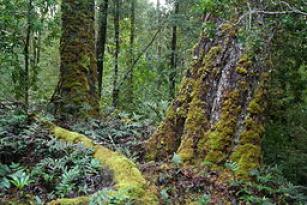Colours, as do scents, can have an influence on our emotional state and behaviour. A pervasive colour in the natural world, green is second only to blue as a favourite hue; a calming, soothing colour, a symbol of peace and ecology, with the potential to relax us both mentally and physically.
The word green is derived from the old English "grene" which has the same linguistic roots as grass and grow. Greens can range fom the bright, neon types with more yellow undertones through to the blue-greens of emeralds and the darker greens of foliage and vegetation or olive greens.
On a physical level the colour green has a soothing and restful quality, helping to relax the body and restock our mental energy. Using this colour as part of the design of a space is a good example of biophilic design, the psychological satisfaction intrinsic in a space that has used nature inspired design themes.
What is the meaning or symbolism of the colour green?
In Western culture it has associations with new beginnings, nature, Spring, growth, health, youth and is regarded as the colour of permission and safety and the environmental movements. This is also reflected in language - think of the sayings "having a green thumb", "greener pastures" or "getting the green light".
Lighter greens are seen as youthful and refreshing; bringing to mind images of fresh grass, a symbol of renewal and the lush growth of Spring.
Darker greens such as foliage or forest green semantically are considered harmonious, restful, soothing or balancing. Dark greens are also considered to be traditional, trustworthy colours, symbols of confidence and reliability.
In China jade green represents youth, trust and beauty. In Japan green is regarded as the colour of eternal life. In Persian culture blue-greens are a representation of paradise.
Thinking of the negative correlations with the colour green, it can be seen as an institutional colour; associated with illness, "turning green", or jealousy, "green with envy".
What does green smell like?
In the aromatic world green is used to describe a fresh, light, cool or sharp aroma. It is a fragrance reminiscent of crushed green leaves, cucumber, cut green capsicum or fresh peas in the pod. Essential oils that have a prominent green note include violet leaf, galbanum, geranium and many herbal or mint scented oils.
A green scent is also often ascribed to freshly cut grass, young stems, conifer trees, the floral lily of the valley, absinthe and the citrus fruits bergamot and lime.
Pairing a scent with a particular colour is an example of cross-modality, a term that describes the inter-relationship across the senses. When we encounter a scent in a specific context, it can create an association with colours, sounds, flavours and tastes or textures.
In this particular study, colour and texture associations to odours were studied. The colour green was matched significantly with the smells of peppermint and eucalyptus, less so with lavender, cedar, geranium, juniperberry and bergamot. It is suggested here that sensory association to scents may come about from the joint influence of learning and natural biases linking dimensions across sensory systems. These links may show inherent neural organisation that can be modified with learning which manifests as cross-modal associations.
Another recent study looked at whether the asssociations between colours and smells is universal or based on cultural factors like language and frequent association between objects and smells. A group of international researchers had people from various cultures smell different scents and choose the colours they most associated with the odour. In this study a vegetable aroma was most often paired with green.
Colour-odour associations were confirmed as being fairly stable within a culture, with connections differing across cultures. It was predicted that colour palettes would be similar between cultures that had similar language or geography, however, this was not the case. The role of age, language, frequency of cooking and travel experience are factors that could explain the various colour-odour differences.
Scent design with green
Drawing upon the cultural, semiotic, cross-modal and natural influences of the colour green, I have included these essential oil blends for vaporising in your space.
Sensory experiences are additive. Merging information from multiple senses amplifies our experience of an environment.
Blend 1: Verde
5 parts cold pressed lime, 5 parts geranium, 4 parts blood orange, 4 parts vetiver, 3 parts Siberian fir essential oils.
I would match this blend with lighter, brighter greens e.g lime green, bright green, neon and yellow-greens, emphasing their sharpness, relaxing and modern feel.


Blend 2: Forest Bathing
4 parts lemon, bergamot, 3 parts cedarwood atlas, vetiver, 2 parts eucalyptus essential oils.
I see this blend being used in a space decorated with darker, more saturated greens or foliage greens, lots of vegetation or a place with large glass windows or doors looking out onto a verdant garden or natural setting. Cooler greens with lower light levels can be paired effectively with this blend in a home office or creative space, helping us to focus on our thoughts and concentrate better on mental tasks.
Shirin-Yoku is a Japanese word which translates as "forest bathing" or "taking in the forest atmosphere". It has been found that the practice of sensory immersion when walking through forests and other natural environments can have definite health benefits, not only mentally but physically. Essential oils found in forest species contain the aroma chemicals limonene (also abundant in citrus essential oils), alpha pinene and cedrol, contributing both to the forest scent and having an anti-stress and blood pressure lowering effect.


The Scentcillo Shaman essential oil blend, comprising of citrus essential oils layered with the woody undertones of cedarwood atlas and cypress is also a suitable choice for an interior decorated with green colours and accents or plants.

Further reading
- Dulux Colour Forecast 2015: Earthwerks - exploring our desire to have greenery in our homes and workplaces.
- What causes the smell of fresh-cut grass? From Compound Interest.
- Study: Healing effects in primates of "green odour" (cut grass).
Cross-modal studies:












